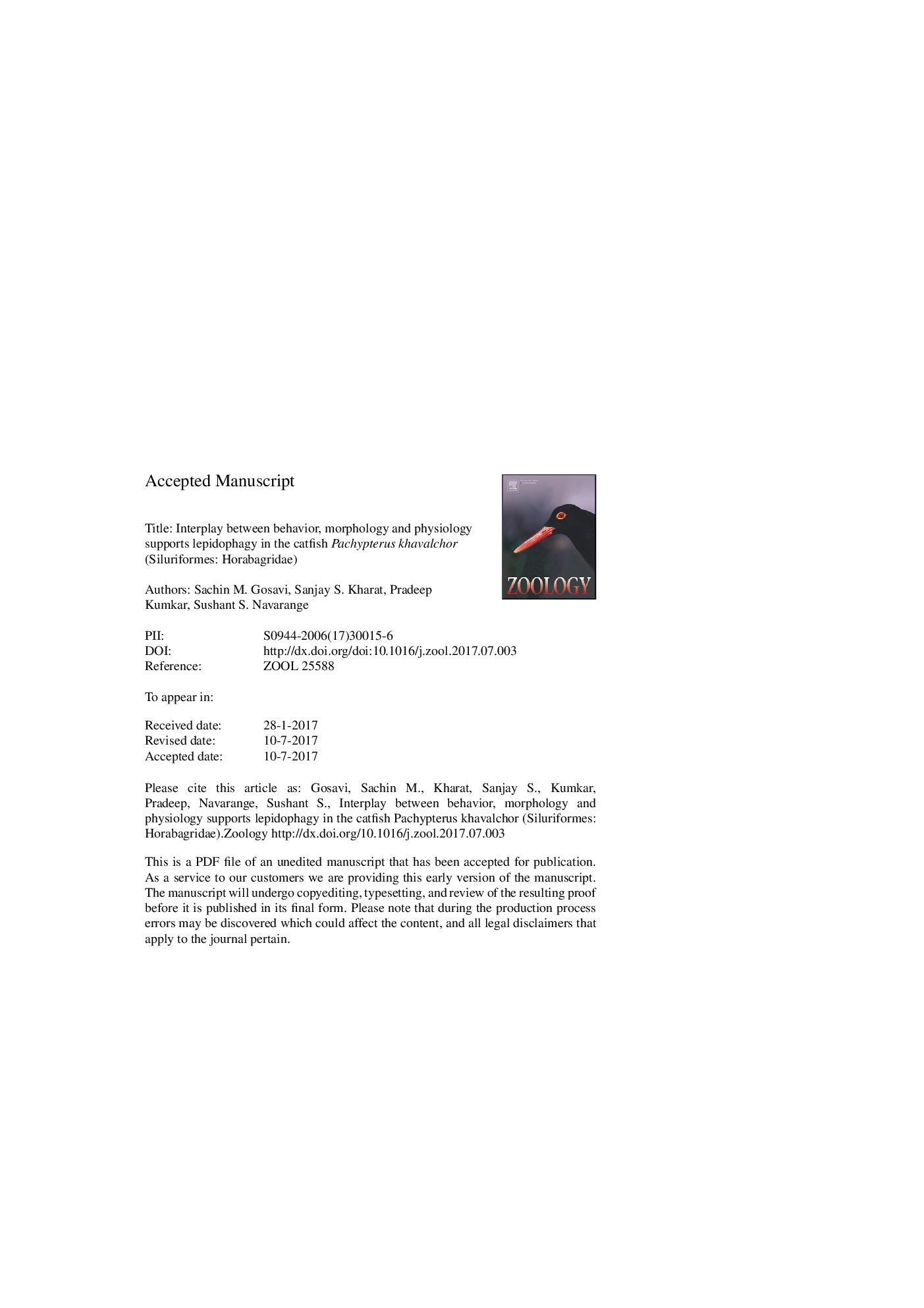| Article ID | Journal | Published Year | Pages | File Type |
|---|---|---|---|---|
| 8627123 | Zoology | 2018 | 26 Pages |
Abstract
The present study demonstrates the scale-eating behavior of a siluroid catfish, Pachypterus khavalchor, and the role of its oral structure and bacterial endosymbionts in shaping this lepidophagous habit. Scale-eating behavior in P. khavalchor was studied using a series of behavioral experiments. P. khavalchor was found to feed only on the scales of live fish and never of dead fish, even after 72Â h of starvation. It was nocturnal in habit and attacked all species that were used as prey. Attacking behavior showed extensive chasing of prey species followed by a powerful random strike at the flank or close to the caudal region in posterior oblique position. After a strike, P. khavalchor was found to immediately turn back and pick up the falling dislodged scales. SEM analysis of oral structures of P. khavalchor revealed three different types of teeth arranged in specific order on the upper jaw, lower jaw and pharyngeal region that could facilitate their lepidophagous habit. Teeth of upper and lower jaws are likely to help in dislodging the scales and pharyngeal teeth may help to engulf the scales. Gut microflora analysis and enzyme assay revealed two isolates, namely Bacillus pumilus and Bacillus licheniformis, which were positive for chitinase production. These two isolates were found to be capable of producing chitinase indicating that they are likely to be involved in the digestion of chitin-rich scales in the host fish gut. An in vitro scale degradation assay further strengthens the results since both isolates were found to be efficient in chitinase production and degradation of scales.
Related Topics
Life Sciences
Agricultural and Biological Sciences
Animal Science and Zoology
Authors
Sachin M. Gosavi, Sanjay S. Kharat, Pradeep Kumkar, Sushant S. Navarange,
